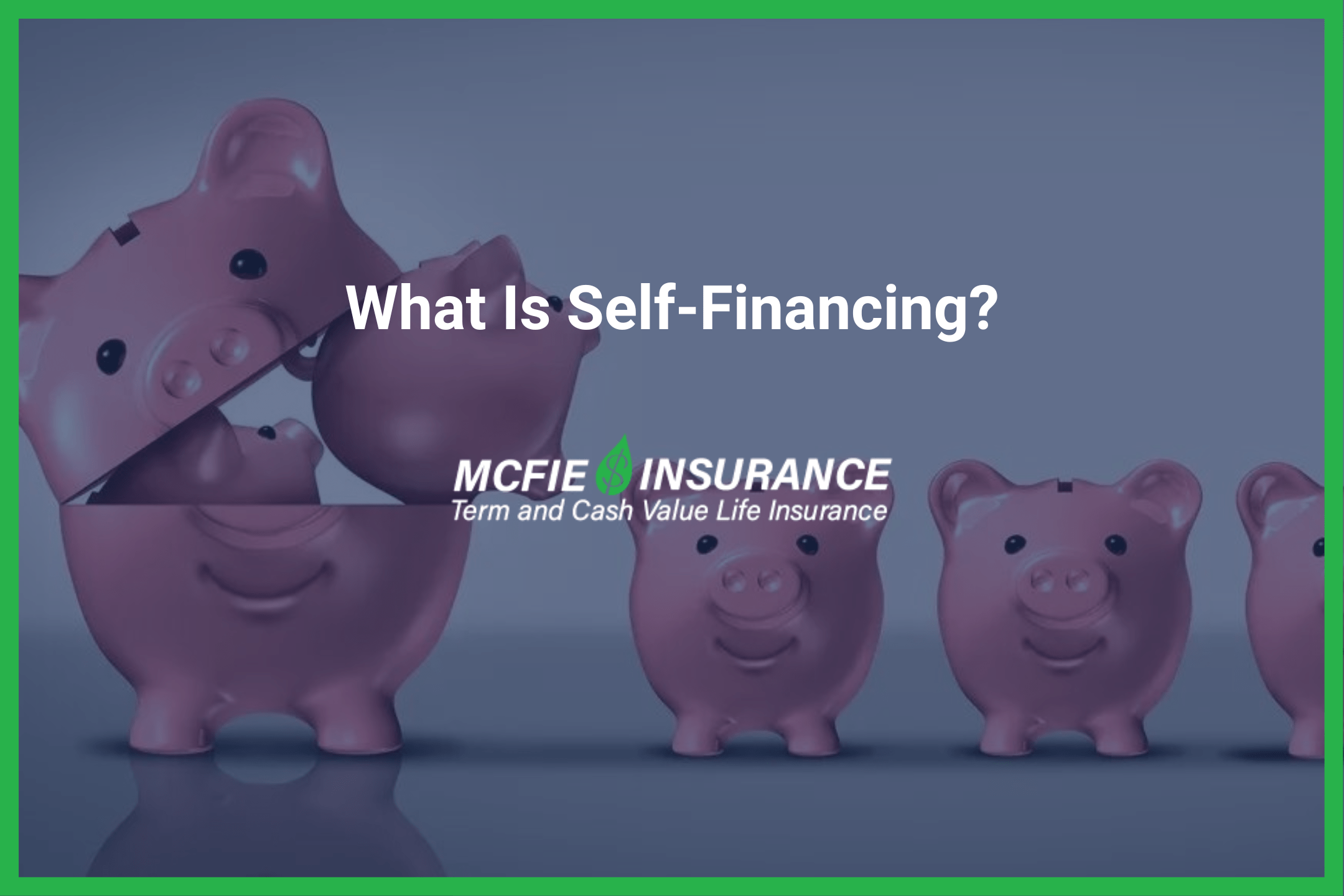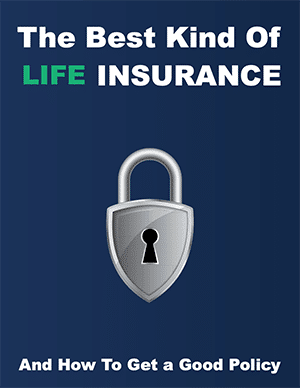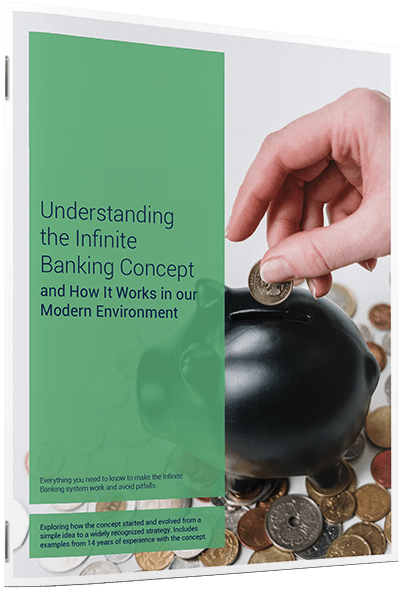702-660-7000
702-660-7000

78% of small-business owners take the initiative to self-finance their businesses, utilizing their personal funds or assets for building the business.
Self-financing a small business can empower entrepreneurs with full authority and autonomy over their venture. This approach not only serves as a solid foundation in the formative stages but can also significantly bolster one’s credentials when seeking external financial support in later stages. Given that many startups are ineligible for business loans at inception, self-financing is often critical to getting a new business off the ground.
The question then arises: How does one effectively bootstrap their business through self-financing? We have curated a list of the five effective strategies for self-financing.
Note: We include a number of self-financing options that are viable, however we do caution against some of them by noting the risks that come along with them.
Borrowing against personal life insurance presents a solid financing avenue, albeit with some risk. Usually, you can borrow up to the accumulated cash value in your policy at a reasonable interest rate which remains fairly steady.
This option diverges from traditional loans in that repayment of the principal is not mandatory on a preset schedule. Policy loans are interest only and the outstanding loan amount simply gets subtracted from the proceeds your beneficiaries would receive upon your death.
Navigating life insurance loans can become complex due to the accrual of compound interest if you do not make interest-only payments. If the loan balance grows to exceed the total premiums you’ve paid for the life insurance, it can create a tax issue.
To self-finance a business using whole life insurance, you can leverage the cash value accumulated in your policy to take a policy loan. First, assess the cash value you’ve built up over time in your whole life insurance policy.
You can then initiate a loan against this cash value, effectively turning your life insurance into a capital source for your business.
By wisely using your whole life insurance in this manner, you maintain control over your business financing while ensuring your policy continues to serve its primary purpose of providing a death benefit. Guaranteed cash value growth can also continue within a whole life policy when interest is paid on an outstanding policy loan.
Worst-case scenario if the business fails and you need to get rid of the policy loan, you have options to do this by adjusting the life insurance policy and decreasing the death benefit.

Get a working knowledge of how each type of life insurance policy works.
After reading this 10-page booklet you'll know more about life insurance than most insurance agents.
Download here>
Actively saving money in advance to self-finance your business offers both financial benefits and security, as it eliminates the need for interest payments on loans. However, this approach does carry the risk of investing your important life savings into the venture, and doesn’t provide continued growth while you’re using your personal savings in the business.
To accelerate savings, you might consider taking on additional work during evenings or weekends. Selling personal belongings can further boost savings; for instance, turning old collectibles gathering dust into quick cash.
This strategy’s pros include complete autonomy over your business decisions and the avoidance of debt and its associated interest costs. On the flip side, the cons involve the potential for personal loss if the business fails, and you receive no compounding growth on personal savings while they are invested in the small business. Balancing the immediate benefits of interest-free financing against the long-term risks, lost opportunity and limitations is important when considering this route for business funding.
If your home equity has grown significantly through mortgage payments, you could leverage it through a home equity loan or a Home Equity Line of Credit (HELOC) to finance your business. A home equity loan delivers funds as a single lump sum, whereas a HELOC functions like a credit card, allowing you to draw funds as needed and pay interest only on the amount you use. Interest only payments on a HELOC are similar to making interest only payments on a life insurance policy loan, but there usually is a time where you must begin making principal payments toward paying off a HELOC or else make a “balloon payment” where all the principal is repaid at the end of the HELOC term.
Both home equity loans and HELOCs may offer lower interest rates compared to some financing methods. However, using your family home as collateral undoubtedly escalates the risks associated with your business venture. It’s essential to ensure a reliable cash flow to cover the loan payments so you don’t run the risk of losing your home. This financing strategy requires careful evaluation of your business’s potential to generate steady income against the risk to your personal assets.

Understanding the Infinite Banking Concept and How It Works In Our Modern Environment 31-page eBook from McFie Insurance Order here>
Using your investments and securities as collateral to secure a loan can be an efficient method to obtain the necessary funds at a favorable interest rate. You can borrow up to the initial margin limit of your stock, which generally ranges from 25 to 50 percent. This strategy provides quick access to capital, and potentially without the need to liquidate your investments, preserving your long-term financial strategies.
However, a critical challenge with a margin loan is the requirement to maintain sufficient equity in your portfolio to prevent margin calls. Should the value of your stock decline and your equity falls below the required margin limit, you will be compelled to inject additional funds within a designated timeframe to meet the margin requirements. Failure to provide the necessary cash could result in your brokerage liquidating securities to cover the shortfall.
The advantage of this approach lies in its easy access to funds and the ability to leverage existing investments without selling them. On the downside, it carries the risk of margin calls during market downturns, and a variable interest rate which can force you into difficult financial decisions or lead to the loss of valuable securities or other assets. Careful consideration of market volatility and your financial resilience is essential when contemplating a margin loan for business financing.
If you have good credit, you could potentially fund your business exclusively through credit cards. While this method ranks among the pricier options for self-financing, numerous successful entrepreneurs have effectively utilized it. To sidestep the treacherous path of accumulating credit card debt, it’s a good idea to hunt for cards with favorable interest rates and steer clear of those offering zero percent interest only to skyrocket after 60 days. Formulating a strategic payment plan is essential to manage and mitigate your debt efficiently.
The primary advantage of this approach is the immediacy and flexibility it offers, allowing you to make necessary purchases and payments without delay. If managed wisely, it can also help build your credit score. However, the cons are significant; high-interest rates can dramatically increase the total debt if not carefully controlled, and the reliance on credit cards can lead to a precarious financial situation if the business does not generate expected returns quickly. If cash flow is tight and you cannot make payments, you can even end up hurting your credit score. This method demands a disciplined financial strategy and a clear understanding of the risks involved.
Loan Qualifications
When starting a business, you likely won’t meet the criteria for a business loan, as most lenders require businesses to be at least one year old and generate a minimum revenue – often around $50,000. Similarly, securing venture capital or attracting an angel investor might prove challenging; investors typically seek out businesses that demonstrate success and growth before committing their funds.
Therefore, self-financing emerges as a viable option to obtain funding when other avenues are inaccessible. By investing your own resources, you can bypass the stringent requirements and scrutiny of external financiers, providing your business with essential capital to commence operations and grow. This approach empowers you with the freedom to steer your business according to your vision without the pressure of external expectations.
Total Business Control
By self-financing, you maintain complete control over your business. This approach eliminates concerns about external interference in your business plan. Accepting funds from investors often means relinquishing some equity in your business and sharing decision-making authority.
Demonstrate Success for Future Funding
Self-financing demonstrates to potential lenders and investors your confidence in a robust business plan. Investing your own money and assets signals a deep commitment to your venture.
Initially funding your company yourself can pave the way for additional financing opportunities in the future.
Successfully bootstrapping your business demands a strategic mix of asset utilization, cash flow management, and frugality. Although the journey to success might be lengthy, the autonomy gained from not being beholden to banks, venture capitalists, or small business loans can prove invaluable.
While self-funding offers significant advantages, it’s important to recognize it as only one among many financing strategies.
Let the team at McFie Insurance show you how utilizing whole life insurance to self-fund your business can be a successful and flexible strategy. Contact us today: 702-660-7000 or [email protected]